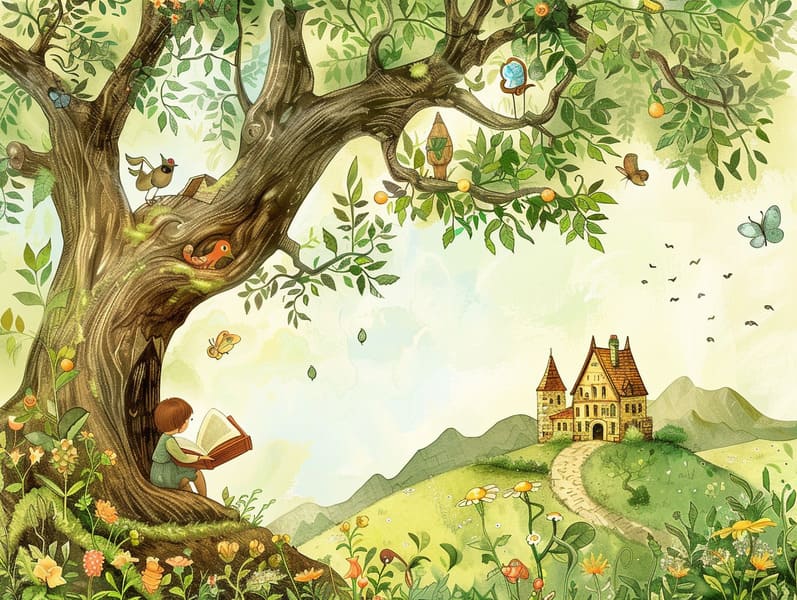The Journey of Vintage Fairy Tales with Its Unceasing Magic.

Classic fairy tales have enduring presence. These stories have been told from one generation to the next far before they were ever written down. They emerged from a variety of traditions, including Eastern traditions. They were initially transmitted among elders, often carrying themes and messages related to the societal norms and beliefs of the time.
Jacob and Wilhelm Grimm, Jacob and Wilhelm Grimm, were among the first to compile and release many of these beloved fairy tales. Their collection, "Grimm's Fairy Stories," included stories like "Cinderella," "The Bread Crumb Trail," and "Schneewittchen," which have since become essentials in the world of beloved fairy tales. Similarly, H. C. Andersen's fanciful tales, such as "The Mermaid's Tale," and "The Duckling's Story," have gained the love worldwide, guaranteeing their place in the pantheon of beloved fairy tales.
Despite being ancient, these stories remain as important as ever, especially as bedtime stories for kids. These charming stories are now available in different formats, including colorful picture books, captivating animations, and digital storybooks.
Their continued relevance can be attributed to several charming aspects:
Vital Lessons: Old fairy tales often illustrate important moral lessons. Fairy tales like "The Tale of the Boy Who Cried Wolf" teach the significance of being truthful, while "The Tale of the Tortoise and the Hare" illustrate the benefits of resolve and meekness. These narratives offer little ones clear distinctions between ethical and unethical, molding their moral compass in a subtle yet deep way.
Kindness and Comprehension: Traditional fairy tales frequently illustrate characters facing obstacles and hardships, provoking young listeners to feel with their struggles and applaud their triumphs. For instance, "The Story of Beauty and the Beast" demonstrates the necessity of seeing beyond the surface to know the true being of a being, promoting sympathy and awareness.
Cultural Recognition: Many ancient fairy tales are deeply embedded in the cultural contexts from which they sprang. Discovering these tales can provide intriguing perspectives into different historical contexts, enhancing a sense of world appreciation and comprehension.
Imagination and Innovation: The enchanted elements in traditional fairy tales—talking animals—enhance children’s visions and dreams. These narratives guide readers to enchanted realms, provoking imaginative dreams and a sense of mystery that continues a lifetime.
Traditional fairy tales are not only fascinating but also teaching. They serve as captivating tools in cultivating various mental and emotional abilities in young ones. When ancient fairy tales are read aloud, they promote speech development by presenting new phrases and complicated sentence structures. This practice also nurtures auditory perception and focus, as young ones follow the story, excited to see what happens next.
Furthermore, exploring the themes and characters of old fairy tales can sharpen logical thinking and reasoning skills. The young are shown to see patterns, make predictions, and make sense of cause and effect. These examinations also support young ones utter their thoughts and feelings, cultivating their emotional intelligence.
In today’s online age, the existence of digital fairy tales has made these narratives more within reach than ever. Online platforms and apps present comprehensive collections of ancient fairy tales that can be explored or listened through anytime, anywhere. Fairy tales read out loud are particularly widespread, giving an immersive method for kids to engage with these spellbinding stories. Read-aloud stories and read-to-me stories move characters and settings to life, often enhanced by delightful sound effects and check it out musical scores that amplify the storytelling experience.
The unending appeal of traditional fairy tales lies in their ability to modify to modern times while maintaining their key morals. Contemporary reinterpretations of these tales often feature more multicultural characters and modern settings, making them pertinent to today’s audience. However, the basic principles of bravery, benevolence, and honesty remain unchanged, continuing to resonate with children of all ages.
Fairy tales also offer a sense of calm and comprehensibility. They present a structured narrative with a transparent beginning, middle, and end, often drawing to a close with the finalization of conflicts and the triumph of righteousness over wickedness. This consistency can be heartening for kids, introducing a sense of firmness in an fluid world.
Ancient fairy tales continue to bewitch and guide new generations, maintaining their majesty and relevance in modern society. As bedtime stories for kids, they put out a perfect blend of charm and understanding, developing moral values, empathy, and creativity. The existence of internet fairy tales and the sought after status of fairy tales spoken validate that these traditional fairy tales remain attainable to new generations.
By continuing and conveying these stories, we continue to celebrate the rich tapestry of narrative artistry and cultural heritage. Whether you are delving into a vibrantly illustrated book, perusing a digital library, or listening to an sound book, the allure of children's fairy tales is always within reach. These stories remind us of the endless essence of fairy tales and its ability to connect us across eras and regions.
Regardless if you are exploring a gorgeously illustrated book, experiencing a internet library, or hearing an sound book, the majesty of classic fairy tales is always within reach.
These stories point out of the unceasing influence of storytelling and its ability to connect us across generations and cultures, forming a connection that fascinates and enlightens alike.